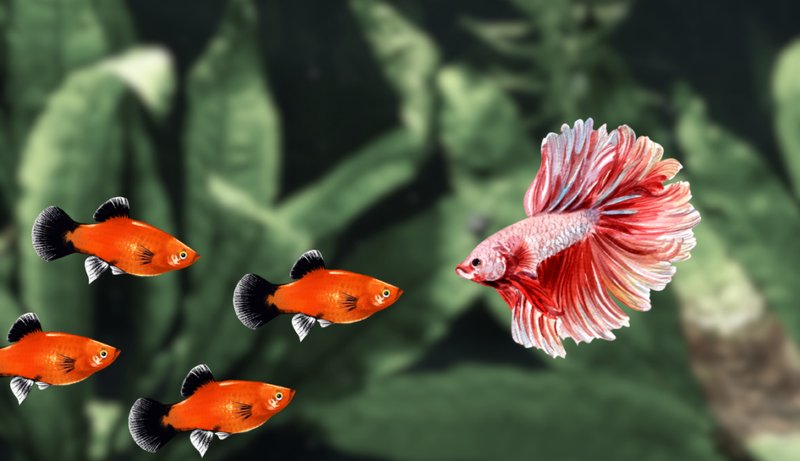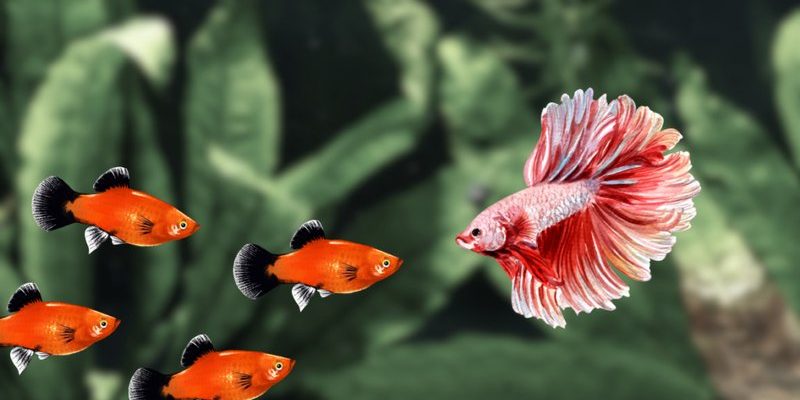
Understanding Platies: The Social Butterflies of the Aquarium
Platies, known for their friendly demeanor, are one of the best choices for beginners. They are small, lively, and come in various colors. These fish typically grow to about 2 to 3 inches in length and prefer to swim in groups. Think of them as the social butterflies of the aquarium world; they thrive when they have company.
Their natural habitat is in warm, slow-moving waters like streams and ponds. This preference for a relaxed environment means they can get along with many other species that share similar needs. But here’s the thing: not every fish will mesh well with our charming little platies.
Platies are peaceful fish, but they can exhibit some territorial behavior during breeding, especially when males are around. It’s important to account for their social nature and choose tank mates that complement their vibe.
Ideal Tank Mates for Platies
When you’re setting up a community tank with platies, you’ll want to look for fish that are similarly sized and known for their gentle temperament. Here are some excellent choices:
- Guppies: Just like platies, guppies are colorful and friendly. They tend to swim happily together, making them perfect companions.
- Corydoras Catfish: These bottom-dwellers are peaceful and help keep the tank clean. They tend to stick to themselves, which makes them good tank mates for platies.
- Neon Tetras: With their striking colors, neon tetras add vibrancy to the tank and enjoy swimming in groups, just like platies.
- Endler’s Livebearers: Very similar to guppies, these fish are small, cheerful, and easy to care for, making them a fantastic fit.
These fish coexist well with platies, creating a lively and colorful community. Just be aware of the typical tank conditions, like pH and temperature!
Fish to Avoid with Platies
Not every fish will be a good fit for your platies. It’s like having a friend who just doesn’t get along with your other pals; it can ruin the fun for everyone! Here are some fish you might want to keep out of your platy tank:
- Betta Fish: Betta males are notoriously aggressive and territorial. Mixing them with platies can lead to stress or even injury.
- Angelfish: While beautiful, angelfish can become bullies in a community tank, especially toward smaller fish like platies.
- Cichlids: Many cichlid species are aggressive and territorial, which can create a hostile environment for platies.
- Goldfish: Goldfish have different water requirements and can grow much larger than platies, making them a poor match.
Keeping these fish away from your platy tank can help ensure a peaceful environment.
Understanding Social Behavior: Group Dynamics Matter
Platies thrive in groups, ideally in schools of at least three to five. This social aspect is important for their well-being. Here’s why:
– Stress Reduction: Having companions helps reduce stress, which is crucial for their health.
– Natural Behavior: In the wild, platies are used to swimming in groups, so replicating this environment in your tank is essential.
– Breeding: If you have a mix of males and females, breeding will happen. Just ensure the male-to-female ratio is balanced to avoid overly aggressive behavior from males.
If you keep only one platy, it might feel lonely and stressed, which can lead to health issues. Think of your aquarium as a little community—fish are social creatures and need company!
Setting Up the Perfect Aquarium for Platies
When creating a habitat for platies, you want to focus on a few essential factors. Here’s a quick checklist:
– Tank Size: A 20-gallon tank or larger is ideal for keeping platies in groups, along with their tank mates. This space allows for swimming and exploring.
– Water Conditions: Aim for a temperature between 70°F and 80°F, with a pH level of 6.8 to 8.5. It’s vital to maintain these levels for your fish’s health.
– Plants and Hiding Spots: Adding plants and decorations not only beautifies the tank but also provides hiding spots for shy fish. Think ferns or driftwood!
Creating a stress-free environment with proper water conditions and plenty of space will make your platies feel right at home.
Signs of Stress in Platies
Even though platies are typically resilient, they can feel stress just like any other fish. Here are a few signs to watch for:
– Hiding: If your platies are spending too much time hiding, it could indicate they feel threatened or stressed.
– Lethargy: Active, social fish suddenly becoming inactive may be a cry for help.
– Color Fading: Platies in distress often lose their vibrant colors, which is a red flag.
Paying attention to these signs can help you take action early. Whether it’s testing water parameters or rearranging the tank environment, being proactive can make a world of difference.
In summary, platies can live with many other fish without a hitch, as long as you choose compatible species and create a suitable environment. Think of your aquarium as a little community where everyone needs to get along for a joyful atmosphere. Remember to keep an eye on their social dynamics, ensure the right tank setup, and watch for signs of stress.
With the right care, your platy tank can flourish as a colorful haven for both your fish and your viewing pleasure. Enjoy the splash of color and energy they bring to your aquarium!

